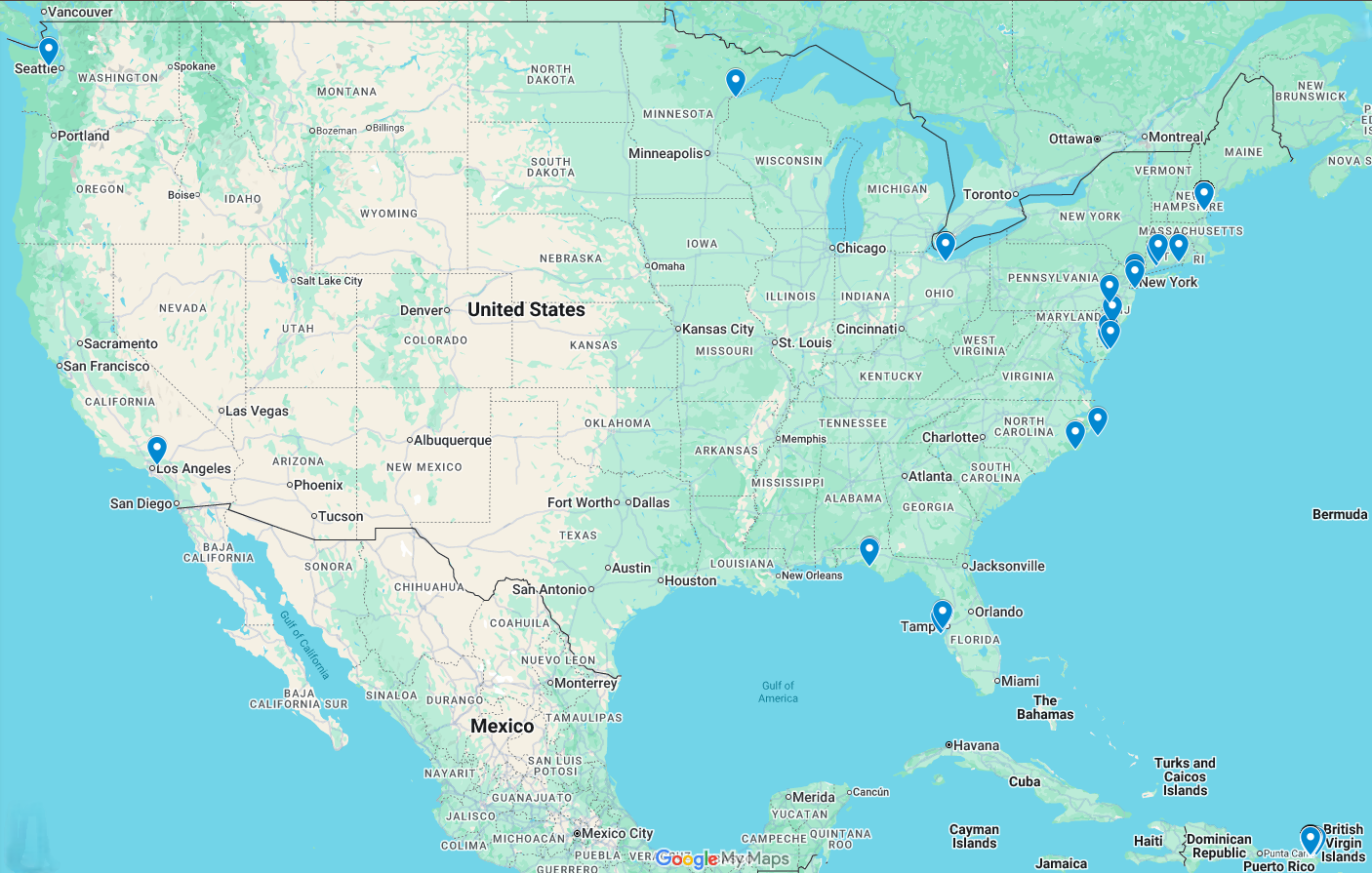
Celebrating National Estuary Week 2025
Recognizing the Value of Estuaries
For many of us the passage of summer into fall puts our regular contact with our bays and estuaries in the rearview mirror of fond memories and slower days. Whether you enjoy our bays and estuaries boating, fishing or catching a cool breeze our estuaries serve us in countless ways.
Estuaries are natural buffers reducing storm damage and flooding, as nurseries supporting nearly two-thirds of our nation’s fisheries, as vital hubs for commerce and shipping, and as cherished places for recreation and relaxation. Though they cover only 4% of America’s landmass, estuaries have an outsized impact on our nation’s economy, environment, and quality of life.
As more Americans move to these naturally scenic and culturally significant regions, we must consider how to protect the many benefits they provide. Today, nearly 40% of the U.S. population lives in a coastal area – drawn by the beauty, opportunity, and connection that life near the water offers.
But with this growing population comes increased pressure on the natural systems that quietly protect us – systems that shield homes from storms, filter pollutants from our water, and provide critical habitat for fish, birds, and other wildlife.
One of the most effective ways to safeguard these ecosystems is through continued federal support for restoration programs such as the National Estuary Program, Geographic Programs, the National Estuarine Research Reserve System, and the Coastal Zone Management Act, among others. These initiatives ensure that our estuaries continue to thrive for generations to come.
National Estuaries Week
Each year, National Estuaries Week celebrates the economic, cultural, and ecological importance of estuaries. This year, Restore America’s Estuaries was proud to celebrate from September 20–27 alongside nearly 4,500 volunteers – making it one of the largest observances yet.
To bring communities together, we encouraged organizations to #WadeIn to their local estuary and make a difference. Dozens of partner organizations submitted 55 restoration and cleanup projects across the East Coast, Gulf Coast, West Coast, Great Lakes, and Puerto Rico, all united by one goal – protecting and restoring our coasts.

The protection and restoration of our estuaries would not be possible without the commitment of coastal champions in Congress. We extend our gratitude to the 19 members of the House and 30 members of the Senate who supported the resolution designating September 20–27, 2025, as National Estuaries Week – including Senators Cassidy and Whitehouse, and the co-chairs of the Congressional Estuaries Caucus, Representatives Bonamici, Haridopolos, Larsen, and Mast.
This bicameral and bipartisan support reminds us that we are all connected through the health of our waters. Clean, safe, and healthy water sustains us.
The Next 30 Years of Coastal Innovation

To help mark National Estuaries Week and RAE’s 30th Anniversary, we convened a panel discussion on Capitol Hill. Leaders in coastal restoration were asked what must be done over the next 30 years to safeguard our coasts. Their answers varied – from restoring oyster reefs to reducing pollution and sediment runoff – but one theme remained constant, we must allow natural systems to function as they were meant to.
Our panelists were:
- Ben Grumbles – Environmental Council of the States (ECOS)
- Amy Hutzel – California State Coastal Conservancy
- Joe Rieger – ANCHOR QEA, Inc.
- Sylvia Troost – Pew Charitable Trusts
- Todd Woodard – Samish Indian Nation
Each panelist brought a unique perspective shaped by decades of experience – from state and tribal leadership to nonprofit advocacy and on-the-ground restoration. Together, their insights painted a picture of both the immense progress we’ve made and the urgent work still ahead.
Since Restore America’s Estuaries was founded 30 years ago, our coasts, bays, and estuaries have undergone tremendous change. Many regions have seen inspiring success stories thanks to strong local partnerships, community volunteers, and sustained investment in restoration. Programs that once began as pilot projects such as living shorelines, marsh restoration, and habitat reconnection, are now recognized as essential tools for coastal resilience. Yet, challenges continue to grow. Rising sea levels, warming and acidifying oceans, and increasing pressure from development threaten the delicate balance of our coastal ecosystems.
Still, the story of our estuaries is one of hope and innovation. Across the country, restoration practitioners are finding new ways to merge traditional ecological knowledge with cutting-edge science. Indigenous leadership is guiding more holistic approaches to stewardship. States are working collaboratively across boundaries to share data and align priorities. And the private sector is increasingly investing in nature-based solutions that deliver economic and environmental benefits alike.
As we look to the decades ahead, it’s clear that protecting our estuaries means investing in innovation, collaboration, and resilience. Together, we can ensure that these vital ecosystems continue to sustain both people and nature for generations to come.
